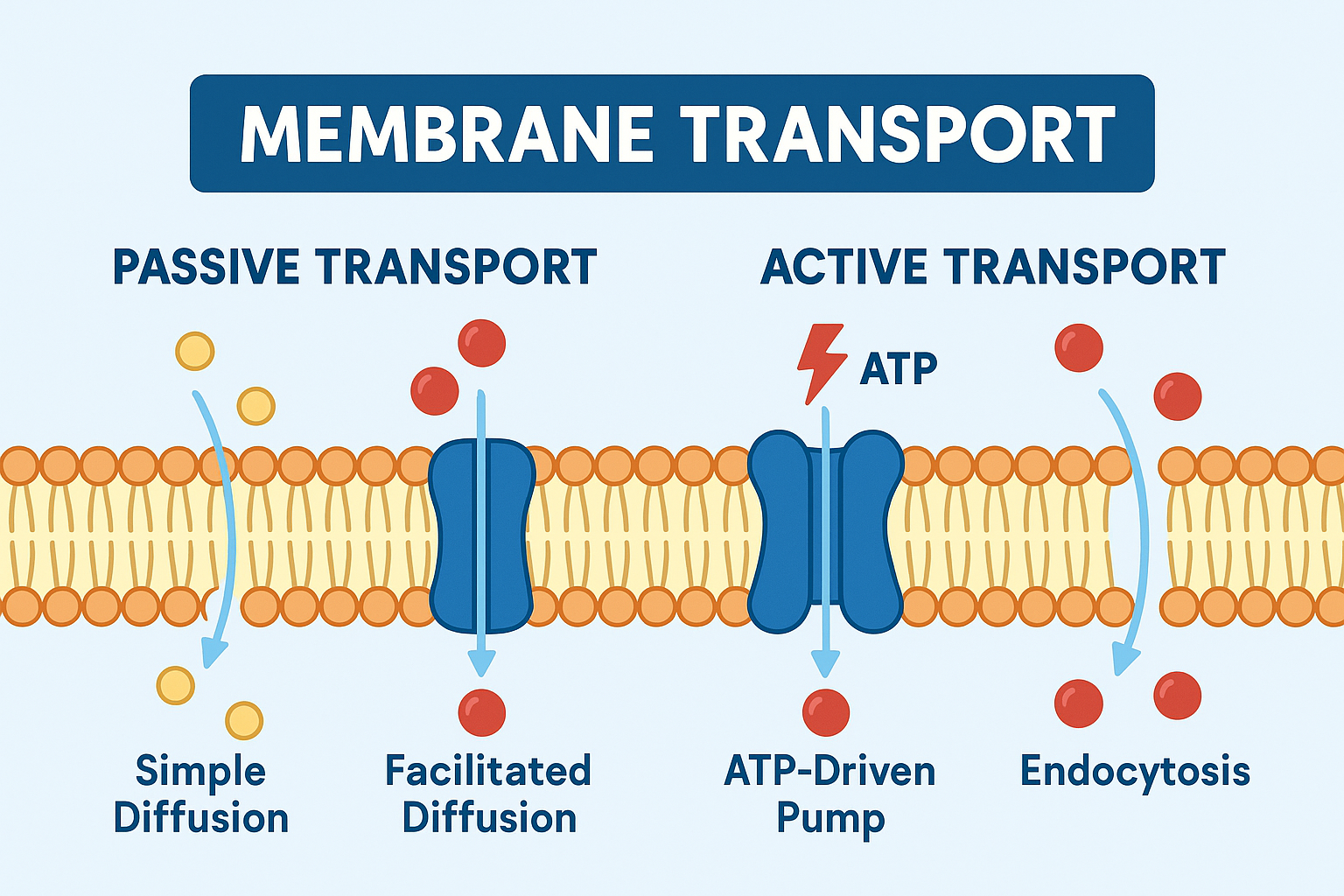Membrane Transport for the MCAT: Diffusion, Channels, and Active Transport Explained
Cell membranes don’t just protect the cell—they control everything that enters and exits, from glucose to ions to signaling molecules. That’s why membrane transport is such a high-yield topic on the MCAT. Whether you're reviewing diffusion, pumps, or vesicle trafficking, this blog breaks down all the essentials with KOTC visuals, tables, and exam-style strategies.
🧬 Core Types of Membrane Transport
| Transport Type | Energy Required? | Key Examples |
|---|---|---|
| Simple Diffusion | ❌ No | O₂, CO₂, small nonpolar molecules |
| Facilitated Diffusion | ❌ No | Glucose via GLUT transporters |
| Primary Active Transport | ✅ Yes (ATP) | Na⁺/K⁺ ATPase pump |
| Secondary Active Transport | ⚠️ Indirect | Na⁺-glucose cotransporter |
| Endocytosis/Exocytosis | ✅ Yes | Phagocytosis, neurotransmitter release |
🧠 MCAT Tip: The MCAT LOVES Na⁺/K⁺ ATPase and glucose transport mechanisms.
⚙️ Na⁺/K⁺ ATPase: A Must-Know Transporter
Pumps 3 Na⁺ out and 2 K⁺ in
Uses 1 ATP per cycle
Helps maintain resting membrane potential
✅ Inhibited by digitalis (clinical link you may see in a passage!)
🔁 Passive vs. Facilitated Diffusion
Passive Diffusion
No energy required
Moves down concentration gradient
Example: O₂, CO₂ across lipid bilayer
Facilitated Diffusion
Still passive—but requires a channel or carrier
Ex: Glucose transporter (GLUT), aquaporins for H₂O
🧪 MCAT-Style Experimental Tie-In
“Cells placed in a hypertonic solution begin to shrink…”
→ Water moves out of the cell via osmosis
“A mutation in a sodium-glucose symporter reduces glucose uptake…”
→ Secondary active transport is impaired → test may explore impact on blood sugar or ATP use
📚 High-Yield Membrane Transport Summary Table
| Mechanism | Direction | Energy? | Example |
|---|---|---|---|
| Simple diffusion | High → Low | ❌ No | O₂, CO₂ |
| Facilitated diffusion | High → Low | ❌ No | Glucose (GLUT), aquaporins |
| Primary active transport | Low → High | ✅ Yes | Na⁺/K⁺ ATPase |
| Secondary active transport | Low → High | ⚠️ Indirect | Na⁺/glucose symport |
| Endocytosis/Exocytosis | Variable | ✅ Yes | Neurotransmitter vesicle release |
🎯 Final MCAT Strategy
Memorize Na⁺/K⁺ ATPase and its stoichiometry
Know when transport requires ATP (and when it doesn’t)
Connect transport to cell signaling, action potentials, and nutrient uptake
Use KOTC visuals and QOTDs to master application
✅ Call-to-Action (CTA)
Stop confusing passive vs active transport. Learn to analyze cell membrane mechanisms with visuals, mnemonics, and MCAT-level passage simulations from King of the Curve.
Frequently Asked Questions (FAQs)
-
Aim for 4-6 focused hours, ensuring you incorporate breaks to avoid burnout.
-
Practice mindfulness techniques, take practice exams under realistic conditions, and maintain a balanced lifestyle.
-
Set short-term goals, seek support from mentors, and reward yourself for small achievements.
-
Regular exercise improves focus, reduces stress, and enhances overall mental clarity.
-
KOTC offers personalized learning tools, gamification features, and adaptive question banks to help students stay on track without burnout.


